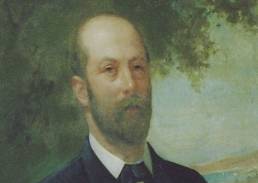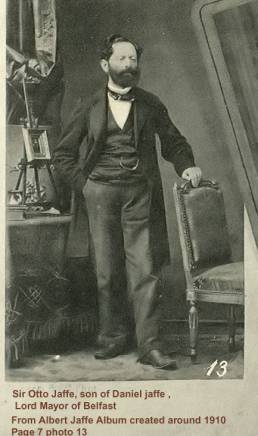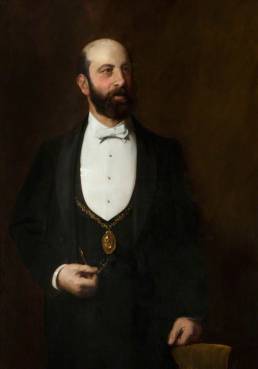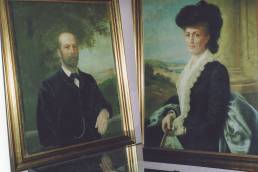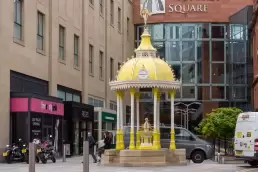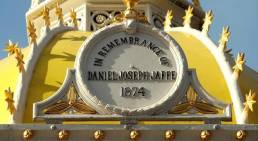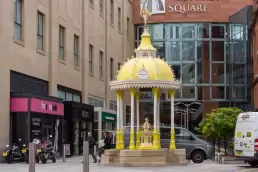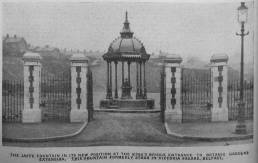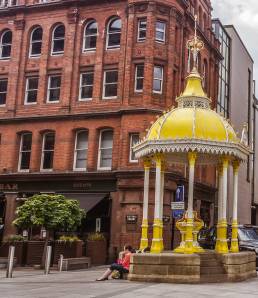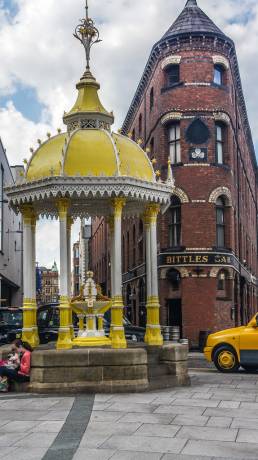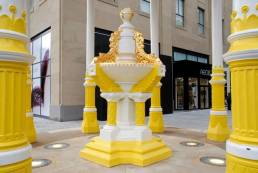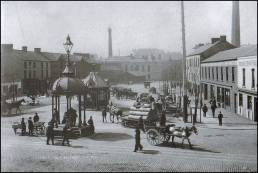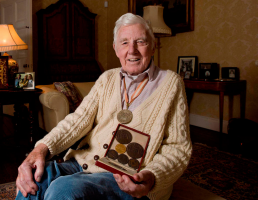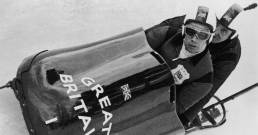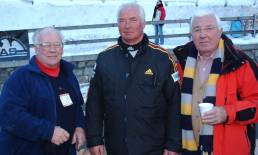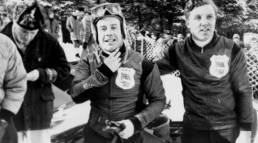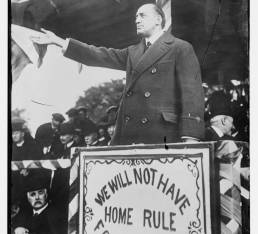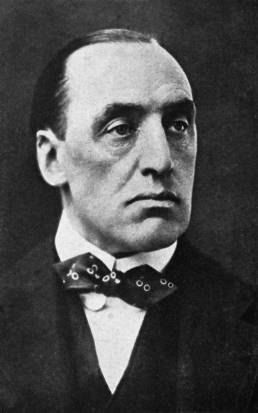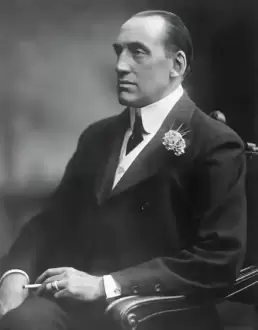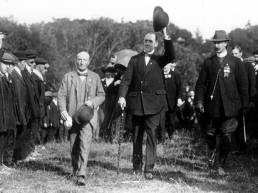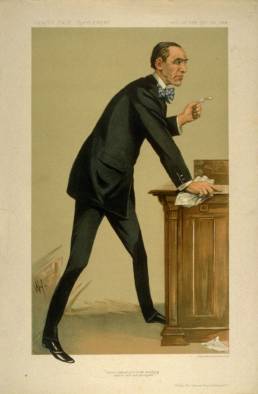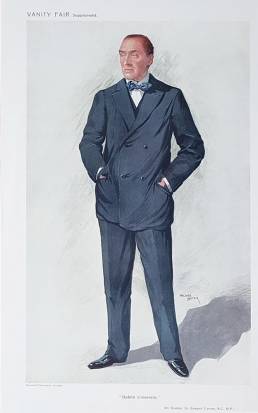Thinking Skills and Personal Capabilities
Sir Otto Jaffe
Sir Otto Jaffe was born in Hamburg in 1846. He came to Belfast at the age of 12 and at 16 he entered the family business, Jaffe Brothers Linen Merchants.
Otto entered public life in 1894 when he was chosen to represent St Anne’s Ward for the Belfast Corporation and in 1899 he was elected Lord Mayor of Belfast for the first time. He was a Liberal Unionist and indeed was active in Unionist politics most notably the anti-Home Rule campaign.
In 1900 Otto Jaffe was knighted by the then Lord Lieutenant, Lord Cadogan and in 1904 he was made Lord Mayor of Belfast for the second time.
He was one of the leading advocates of Unionism articulating a strong economic and commercial case against Home Rule. He feared it would have a devastating impact on Belfast business life and the wider economic wellbeing of Ireland.
He built his house, Kin Edar, in 1898 shortly before he became Lord Mayor for the first time. This impressive residence stood on ground near what is now Sydenham Avenue in east Belfast
Philanthropy
Sir Otto was well known throughout his public life in Belfast for his generosity of both time and money. During his first term as Lord Mayor he and the Lady Mayoress raised £10,000 for the dependants of soldiers and sailors serving in the Boer War. He was officially connected with the Royal Victoria Hospital where he was Governor, having also contributed £1,000 of his own money to the original building fund. Otto was particularly interested in education and in 1905 he gave £4,000 to the fund for better equipment for Queen’s College (now university). He was an active member of the committee which got the Public Libraries Act extended to Belfast, leading to the first free library being established. In 1904, he contributed £4,000 to the building of a new synagogue in north Belfast.Three years later he erected the Jaffe School for the Jewish Children of Belfast on the Cliftonville Road, again at his own cost.
Sir Otto is also connected to east Belfast through the linen industry. In 1910 he erected the Jaffe Spinning Mill on the Newtownards Road, also known as Strand Spinning.This provided work for about 350 local people, rising to 650 in 1914 when the company expanded to make munitions. In later years the business was bought over by James Mackie and Son and is still visible today as the PortviewTrade Centre.
Impact of the War
The First World War tore Europe apart and as the appalling loss of life registered with the public ant-German sentiment grew. The press often fuelled the paranoia and even the Royal Family had to erase their German heritage and family name. In 1914, after the outbreak of World War I, the government passed the Aliens Restriction Act.This controlled the activities of so called ‘enemy aliens’, restricting their movements and preventing them from living in certain areas.The Trading with the Enemy Act also closed down any German owned businesses.
In 1888 Otto Jaffe had been naturalised as a British citizen and denaturalised as a German Citizen. He was a unionist and saw himself as being loyal to king and country. His eldest son Arthur was also a captain in the London Irish Rifles and was fighting in the war. His stand against this legislation and treatment was well publicised and even raised in Parliament.
However his wealth, prominence and impeccable credentials and service did not prevent him from being viewed with suspicion. During the early days of 1915 Sir Otto and Lady Jaffe continued to live in Belfast with relative normality. But when a passenger liner, the Lusitania was torpedoed by a German submarine off the coast of Cork on 7 May resulting in the death of 1,000 people, anti-German feeling in Britain and Ireland rose to breaking point.
Friends of the Jaffes began to turn their backs on them and they even had to resign their place on the Committee of the Children’s Hospital when a group of local ladies refused to subscribe again if they stayed.
In a passioante letter to the Northern Whig in May 1915, Sir Otto states
“how anyone who has any knowledge of me and my life would think that I could approve of the horrible and detestable actions of which she (Germany) has been guilty is almost beyond my comprehension.” He also described himself as being “overwhelmed with pain and sorrow”.
Although it was agreed in the House of Lords, that it would not be reasonable for any naturalised Germans to face a tribunal and subsequent internment, it would seem that Sir Otto still felt compelled to leave Belfast for London in 1915.
Those who knew him say he left a broken man. He resigned his post as Alderman of Windsor Ward from Belfast City Council in June 1916 when he was almost 70 years of age.
He must have realised then that he would never return to Belfast, and by 1918 he was selling off some of his properties at less than a quarter of their value.
Sir Otto lived out the remainder of his life in London until his death in April 1929 at the age of 83.
Jaffe Memorial Fountain
One of the most beautiful pieces of heritage public street furniture is the famous Jaffe Fountain. Its vibrant yellow and ornate iron structure stands in spectacular contrast to the equally iconic Victoria Square dome. The fountain is also a lasting memorial to the Jewish community and their contribution to the civic, commercial and cultural life of the city.
THE JAFFE MEMORIAL FOUNTAIN – erected by his son Sir Otto Moses Jaffe who held the office of Belfast Lord Mayor twice and was a leader of the Jewish community in the city. The inscription reads:
Daniel Joseph Jaffe born Schwerin 1809 Died at Nice 1874
A founder of Jaffe Brothers of Hamburg, Dundee, Belfast, Liepzig and Paris.
He fostered the linen trade of Ulster
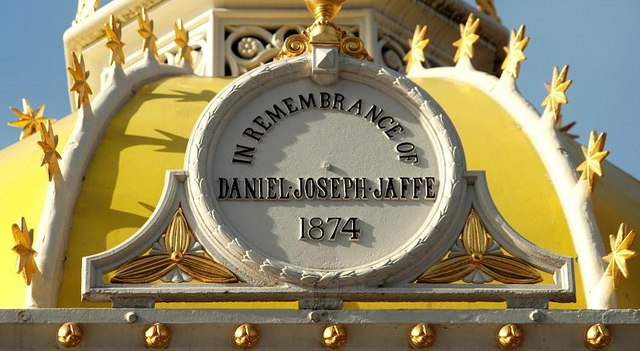 Otto Jaffe, Belfast’s first Jewish Lord Mayor, was born in Hamburg on August 13, 1846. His father, Daniel Joseph Jaffe, was a merchant, who came to Belfast to set up a linen export business in 1850. This business went on to become the largest linen exporter in Ireland.
Otto Jaffe, Belfast’s first Jewish Lord Mayor, was born in Hamburg on August 13, 1846. His father, Daniel Joseph Jaffe, was a merchant, who came to Belfast to set up a linen export business in 1850. This business went on to become the largest linen exporter in Ireland.
The Jaffe Brothers were based at Bedford Street in Belfast. Jaffe was educated at Mr Tate’s school in Hollywood, Co Down and spent the decade from 1867 working in New York. He then returned to Belfast in 1877 to take over the management of the family firm.
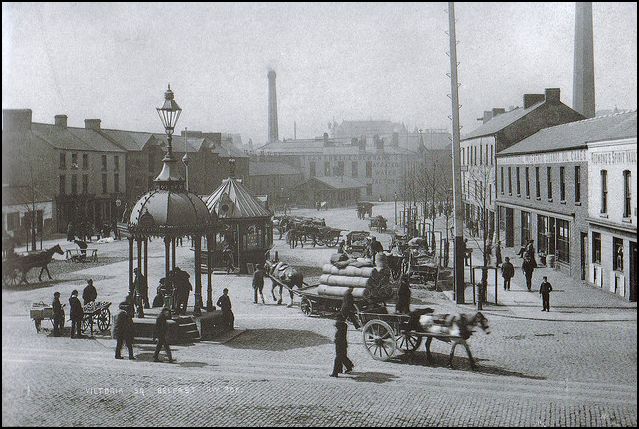 Jaffe erected the Jaffe Memorial fountain in 1874 to commemorate his father, who had funded the building of Belfast’s first synagogue at Great Victoria Street. Originally sited in Victoria Square, the fountain was surmounted by an ornamental lamp the a weather vane. It was later moved to the Botanic Gardens. Another memorial to Daniel Jaffe, a tall granite obelisk was erected in City Cemetery on the Falls Road.
Jaffe erected the Jaffe Memorial fountain in 1874 to commemorate his father, who had funded the building of Belfast’s first synagogue at Great Victoria Street. Originally sited in Victoria Square, the fountain was surmounted by an ornamental lamp the a weather vane. It was later moved to the Botanic Gardens. Another memorial to Daniel Jaffe, a tall granite obelisk was erected in City Cemetery on the Falls Road.
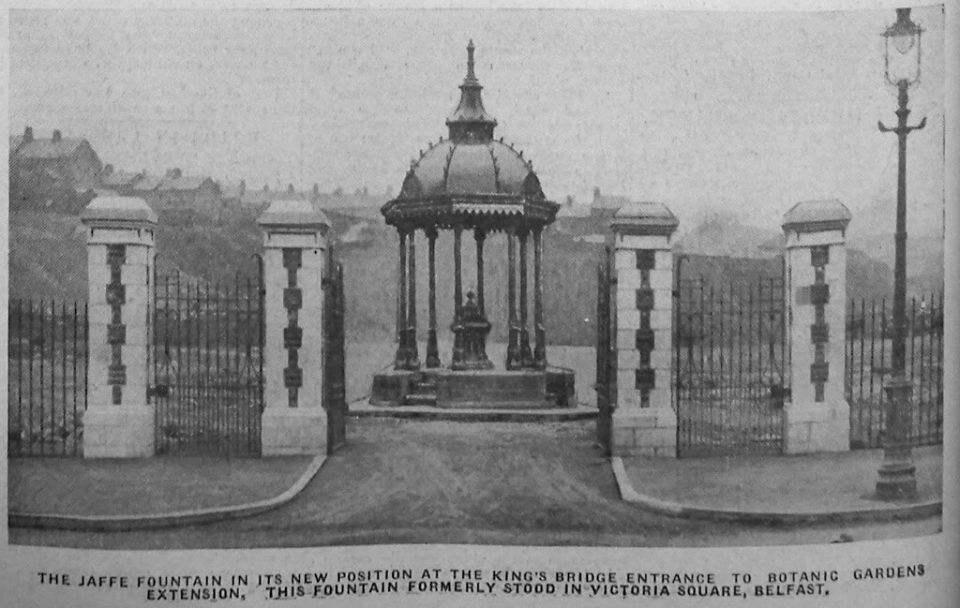
Public fountains were a popular way to commemorate famous people and also offered a public service. It was made by George Smith & Co The Sun Foundry in Glasgow. Interestingly it has a twin in Limerick known as the Russell Fountain. The fountains could be chosen from a catalogue and other similar designs were installed in the UK.
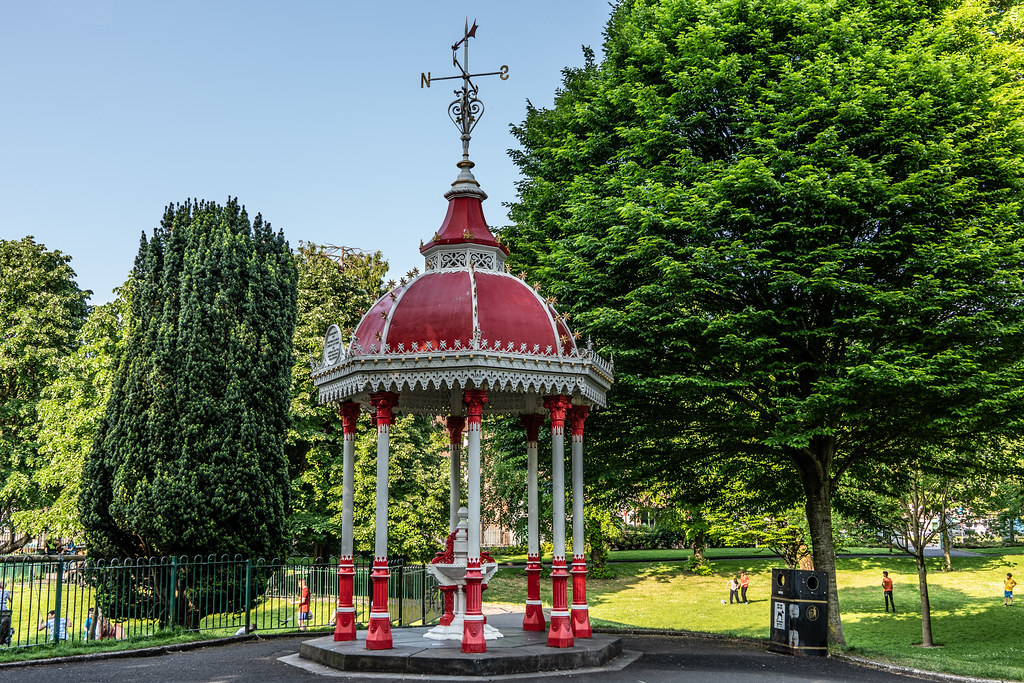
Robin Dixon, Lord Glentoran - Gold Olympic Medal
World class sportsman and Gold medal winning Olympian Robin Dixon, Lord Glentoran brought home Gold for Great Britain and Northern Ireland in 1964
Major Thomas “Robin” Valerian Dixon, 3rd Baron Glentoran, CBE (born 21st April 1935) is a former British bobsledder and Northern Irish politician, known as Robin Dixon. He is a former Conservative Party Shadow Minister for the Olympics.
Dixon was educated at Eton and Grenoble in France. After university, he served with the Grenadier Guards from 1954 to 1966 including service in the Cyprus Emergency
In 1964, Dixon was granted leave from the army to participate in the 1964 Winter Olympics at Innsbruck, where he won the gold medal in the Two-man Bobsleigh as brakeman to Tony Nash and was awarded a MBE a year later. Nash and Dixon also won three medals in the two-man event at the FIBT World Championships with one gold (1965) and two bronzes (1963, 1966).
Dixon retained his sporting links throughout his life: he was President of the Jury at the 1976 Winter Olympics, set up the Ulster Games Foundation in 1983, and was appointed Chairman of the Northern Ireland Tall Ships Council in 1987. He has been President of the British Bobsleigh Association since 1987
By the time, Dixon had left the Army in 1966 with the rank of Major, he had also served with 3 Para and the SAS in the Cyprus and Borneo conflicts, and gone into business at home in Northern Ireland. “My family felt it was time I started contributing to the life of the province,” he explains.
He went on to work for Kodak in their public relations department and in 1971 joined the Northern Irish business, Redland Tile and Brick Ltd, which he built up into a multimillion-pound subsidiary of Redland plc and became Managing Director.
In 1983, he was appointed High Sheriff of Antrim.
Upon the 1995 death of his father, the 2nd Baron Glentoran, Dixon inherited his title, and he retired from business in 1998.
Dixon was Chairman of Positively Belfast from 1992 to 1996, Chairman of the “Growing a Green Economy” Committee from 1993 to 1995 and has been Shadow Minister for Northern Ireland, Shadow Minister for Sport and Shadow Minister for Environment, Food and Rural Affairs. He is also a member of the British-Irish Parliamentary Body.
Lord Glentoran was one of 92 hereditary peers that remain in the House of Lords after the passing of the House of Lords Act 1999, and sat on the Conservative benches until his retirement from the House on 1 June 2018, travelling frequently from his family home, Drumadarragh House, near Ballyclare.
Dixon and his driver, Tony Nash, were inducted into the British Bobsleigh Hall of Fame as a result of their success. A curve at the St. Moritz-Celerina Olympic Bobrun is named for both Nash and Dixon. He was appointed a CBE in 1993 for services to Northern Ireland and Industry.
Edward Carson
Edward Carson, Lord Carson of Duncairn.
1854-1935
Edward Carson’s image is that of an intransigent unionist leader who helped raise the political temperature in Ireland and bring it to the brink of civil conflict. However, he himself felt a profound sense of unease about the measures then being taken by his supporters in Ulster.
Carson was born in Dublin, into a liberal professional middle class family and studied law at Trinity College. He was amongst the most successful lawyers of his generation. The reputation he acquired led to his election as Unionist MP for Trinity College (1892-1918), and to his becoming Solicitor-General for Ireland (1892), and for England (1900-05). Carson acted as Crown Prosecutor during the Irish land agitation, 1888-91, defended Queensberry in the first trial of Oscar Wilde (1895) and was involved in the ‘Winslow Boy’ case. In parliament his speech attacking the Second Home Rule Bill in 1893 was widely acclaimed; he had emerged by 1906 as one of the most prominent politicians in the United Kingdom.
In February 1910, Carson agreed to become leader of the Irish Unionist Parliamentary Party and in June 1911 accepted Craig’s invitation to lead the Ulster Unionists. He brought credibility and prestige to the movement. His objective throughout was to preserve the union between Britain and Ireland, believing it to be in the best interests of his fellow-countrymen; he was an Irish patriot, but not a nationalist. During the home rule crisis, 1912-14, he aimed to foment and use Ulster’s resistance as a means of blocking any granting of self-government to Ireland. Owing to his undoubted charisma, inspired oratory and unyielding image, he was hero-worshiped by unionists in the province of his adoption. Carson was deeply uneasy about the decision to establish an Ulster Volunteer Force and to run guns through Larne. However he accepted them as a means of applying additional pressure to the British government and so reaching the negotiated agreement he privately sought. By 1914, he had come to support Irish partition as a solution, fatalistically accepting that home rule was inevitable. By then his strategy had brought Ireland close to civil war.
Though Carson remained as unionist leader up to 1921, in wartime he spoke in favour of all-Ireland political institutions and structures, which lost him support in Ulster. Moreover, his energies were diverted into other areas. He played a significant role in the removal of Asquith as Prime Minister in 1916. During the conflict he also served in the British government, successively as Attorney General, First Lord of the Admiralty and in the War Cabinet. In 1919 he eagerly returned to his legal practice and he accepted a peerage in 1921. The Anglo-Irish Treaty (1921) was strongly criticised by him, but from a southern Irish unionist perspective. He died in 1935 and is buried in St. Anne’s Cathedral, Belfast. ‘Northern Ireland provided him with a tomb, but not a home.’
Lesson Plans
Link 1
Link 2
Link 3
Useful Links
Link 1
Link 2
Link 3


